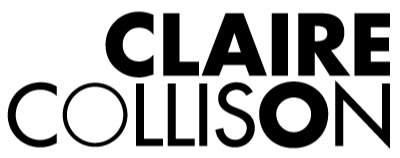Why are so many unreconstructed women like me hidden?
When Claire discovered that about 2/3 of women choose not to have reconstruction after mastectomy, she wanted to find a way to share and understand their experiences through her Intimate Tour of Breasts.
Breast cancer became my focus for my art
As a writer and artist, I’ve been exploring themes of women, health and representation for 30 years – so it wasn’t surprising, when diagnosed with breast cancer in 2014, that this would become a focus for new work. It was just a matter of deciding what form it would take: poetry? Portrait? Memoir? Well, yes, all those, but this new territory required something new – something that could involve others, and would open things up rather than tidy them away.
Treatment is about more than treating the cancer
When I learned I had breast cancer, one of the first things I was told was that I needed to decide whether to have reconstructive surgery during my mastectomy, or later: not if, but when. I find this extraordinary. I had a life-threatening illness, and yet I felt I was being asked to make a decision about something that would supposedly make everyone else feel better. But breast cancer treatment, I quickly learned, is as much about the way women feel – about our breasts, and the way they are perceived – as it is about what we are experiencing in any medical sense.
We are encouraged to care more about how we appear than how we are
Since electing not to have reconstructive surgery – and learning this is what about 2/3 of women also decide – I’ve been asking: why are the thousands of women like me so hidden? Even now, when I’ve met scores of women who I know are like me, we remain hidden to each other. From the outset, I feel we are encouraged to focus on disguise – wigs, prostheses, reconstruction. What has happened to us that means we are so preoccupied with how we appear rather how we are? And how does this invisibility impact on our healthcare choices?
I want to show how the representation of women affects how we feel
I’ve come up with two ways of creatively exploring these questions: a single-breasted life drawing monologue, Truth Is Beauty, which I’ll be performing during October; and a participatory walking tour, An Intimate Tour of Breasts.
I want to make connections between how we are represented and how we feel. An Intimate Tour Of Breasts takes participants on routes I have organised that explore images of breasts all around us – from art galleries to Page 3 – to consider how breasts have been mythologised and commodified throughout history to the present day. Streets, shops, images and adverts that we pass along the way provoke conversations, as we attempt to unravel how all this makes women feel about their own breasts.
Women’s bodies are shown in so many different ways
So far, I’ve designed walks in London and Birmingham. In London, we looked at the differences between fantasy breasts and real ones. We ate oranges outside the Nell Gwynn pub, and visited Soho’s Windmill Theatre, famed for its nude tableaux, where ‘if it moved, it was rude’. We compared this iconic venue with current lap dancing club culture, where women pay to work, and breast enhancement is practically a requirement if they are to earn enough to recoup their costs. We visited the most lactating Old Master in the National Gallery, Tintoretto’s Origin of The Milky Way, where luminous breast milk splutters across the massive canvas, offending no one – and we discussed why this was fine, when down the road at Claridges, a nursing mother having tea there recently was asked to cover up. In Birmingham the question of what breasts are for was explored through church and sex shop, via a bra department, and ending with a whistle stop tour of Women Protest Power at the Museum and Art Gallery.
Right now, I’m creating two brand new Intimate Tours, in Peterborough and Liverpool. Researching in Peterborough, I discovered treasures, including an old lingerie factory, a pioneering radiographer, and biblical breastfeeding stories in the stained glass window of a church. I’m currently weaving these all into a leisurely and accessible three-hour walk, which will culminate with a celebratory swim at the heated Art Deco lido, along with a specially prepared breast-themed tea. And now I’m in Liverpool. A culturally rich city to explore, it has the highest percentage of women undertaking cosmetic breast surgery in the UK. It also has a thriving community of breast cancer survivors, including the Pool of Life dragon boat team, who have invited me to paddle with them.
Join my Intimate Tour of Breasts
I’m convinced everywhere has its own Intimate Tour of Breasts. My mission is to meet people who can help me unearth them. I’m hoping to meet all kinds of people in Liverpool – those affected by breast cancer, arts and life drawing communities, local historians, breastfeeding activists, bra fitters, psycho-geographers… I’d love to hear from you with suggestions of places to include. Or invite me to your hometown to create a bespoke tour for you! And please, come to the events. It won’t be the same without you. (First published 22 August 2019, Breast Cancer Now website)

